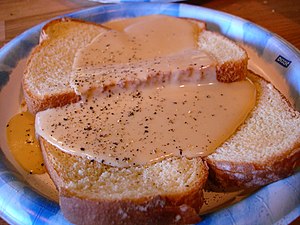With my new Friday series highlighting some of my favorite cheesemakers (and my incredibly dull Wednesday night class allowing me time to do the internet research that I need...), I've started cruising the state cheesemaker organization websites. Since I'm a Cali girl (omigod! fer sher!), I've started at the California Artisan Cheese Guild. They have a great list of California dairies, and a map of where all of these good people live, work, and care for the beasties that provide the raw materials for our favorite food. Sadly for me, almost all of these guys live in Northern California, while I alternately bake and drown in Los Angeles.
So anyway - Pt. Reyes Farmstead Cheese Company. The Giacomini family has owned and operated this dairy, milking cows since 1959 and started making cheese in 2000. The ranch is located on the hills overlooking Tomales Bay in Marin County. These are the epitome of happy California cows! They've got a beautiful view. It never gets too hot. Their tasty grass is nicely salted by the morning dew coming off the bay. You can taste all this joy in every crumble.
I'd love to see that facility! I'm imagining a giant pile of poo in a storage room with some pipes in the ceiling and a bunch of fans directing the stinky air into a processing room where the lights shine bright, and the workers are always smiling (because of their awesome personal ventilators!). Must do more research. Especially with the concerns about greenhouse gasses and global warming, the fact that these guys are helping protect their little corner of paradise.
Here's to the happy cows at Pt. Reyes Farmstead Cheese Company and their very clever keepers! Way to go Bessie! Keep it up!


